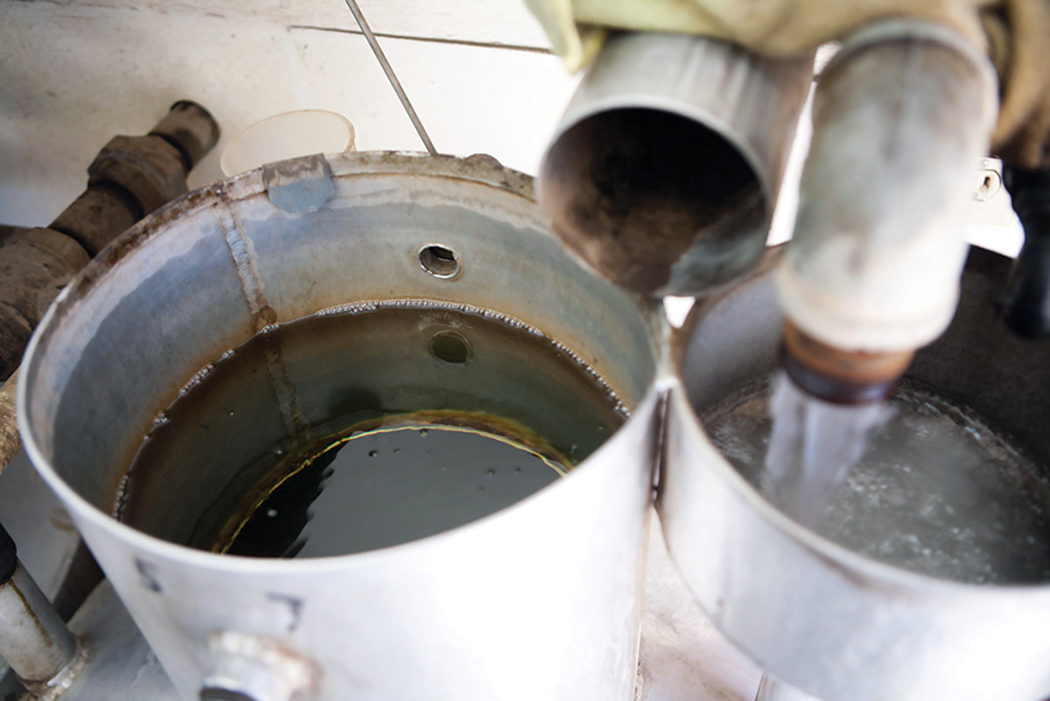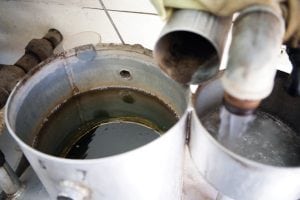
Home » Mighty mint: Growers help meet world demand for mint
Mighty mint: Growers help meet world demand for mint

May 6, 2018
By Jennifer L. Drey
When it comes to mint, a little goes a long way. One drop of mint oil can flavor 2.5 tubes of toothpaste, 31 sticks of gum or 125 mint candies. But when it comes to Washington-grown mint, it may be more accurate to say that a lot goes a long way — all around the world in fact.
“We’re shipping globally right here out of Washington state. We ship (mint) to customers in every continent with the exception of Antarctica,” said Craig St. Hilaire, president of Harrah-based mint dealer Labbeemint, which buys mint from more than 50 producers in Washington.
Washington exported $35 million of peppermint oil and $10 million of spearmint oil in 2016 to markets including China, Japan, Germany and Switzerland. Exports for both types of oils appear to have increased in 2017, said Rianne Perry, international marketing manager for the state Department of Agriculture.
“The U.S. producers provide what is considered by most to be the highest quality mint oils in the world,” St. Hilaire said.
Washington produced 2.3 million pounds of spearmint, or 72 percent of all spearmint grown in the United States in 2016, making it the top-producing spearmint state in the nation. The state ranked third in the nation for peppermint production.
Of the 250 mint producers in the U.S., about 200 are the Northwest states of Washington, Oregon and Idaho, said St. Hilaire, whose company buys mint from growers in all three of those states, as well as in the Midwest.
The two main production areas for mint in Washington are the Columbia Basin, where mint production is concentrated in the Othello and Royal City areas, and in the Yakima Valley from Prosser to Yakima, according to Shane Johnson, executive director of the Washington Mint Growers Association.
Washington had about 15,800 acres of spearmint planted in 2016. Primary varieties were scotch spearmint and native spearmint.
The warm days and cool nights of the region, combined with its extended daylight hours, make the area highly suitable for growing mint. The abundance of water available through irrigation districts further helps to create ideal growing conditions for the water-loving plant.
“The Pacific Northwest, and Washington in general, is the perfect climate to grow mint,” Johnson said. “Mint loves warm to hot days. You want a little heat before you harvest mint because that stresses the plant a bit, and when it’s stressed, that’s when it goes into oil production mode.”

Tall and leafy, mint grows similarly to an alfalfa plant. However, the crop is essentially worthless until it has undergone a distillation process that turns it to oil. That process happens on the farm prior to its sale to companies such as Labbeemint, which buy mint in the oil form.
Although not necessarily labor intensive, growing and distilling mint does require specialty machinery, the most important piece being a mint distillery, which uses steam to extract the oil from the mint hay, Johnson said.
“For mint, the harvest hasn’t happened until it has hit the mint (distillery) and the steam distillation takes place,” he said.
Larger farms typically own their own distilleries, but smaller and newer farms often look to their neighbors to do custom distilling for them, he said.
Once in oil form, mint is sold to dealers in 55-gallon barrels, which net about 400 pounds of mint oil per barrel. One 400-pound barrel can be used to flavor about five million sticks of gum, 400,000 tubes of toothpaste or 20 million mint candies.
Prior to being sold to the end users, mint dealers further refine the oil then blend it to meet consumer specifications.
The top buyers of mint are oral care companies, such as Colgate and Procter and Gamble, that use it to flavor toothpaste, mouthwash and other dental products.
Flavor and fragrance creator companies that craft customized flavors and fragrances for consumer-goods manufacturers also are big buyers, St. Hilaire said.
Looking forward, mint producers and dealers see new growth potential in the emerging aromatherapy market. Home aromatherapy users typically buy essential oils in one-ounce bottles that come at a premium due to their high potency and pure quality. Mint is one of many popular essential oils.
“It’s an encouraging development. As more consumers become aware of and use essential oils in different applications like aromatherapy, for making their homes smell nice and certain topical applications, there’s a real great growth potential for American producers,” he said.
The global aromatherapy market is expected to grow to $2.35 billion by 2025, according to a 2017 report by Grand View Research Inc., a San Francisco-based market research and consulting company.
“U.S. producers produce a great oil, so we’ve got some opportunities to really expand our market share as far as it goes with aromatherapy,” St. Hilaire said.
Generally considered a cash crop, mint commands higher premiums than commodity crops, such as grains. Pricing on mint has been relatively stable for the past few years, though it can be influenced by land-rent prices and other commodity prices, St. Hilaire said.
The price of spearmint is stabilized by a federal marketing order that works to match supply and demand, Johnson noted. Peppermint does not have a federal marketing order.
For some mint farmers, mint is their primary crop; for others, it is one of many crops they will harvest during the course of the year. Mint harvesting begins in late June and extends through September. In the Yakima Valley, most growers double cut their mint, meaning they get two harvests from their plants, usually 60 days apart. This results in about 200 pounds per acre between the two cuttings, St. Hilaire said.
Regardless of whether mint is a primary or secondary focus of a farm, mint growers must use plant-rotation crops to avoid the mistakes of the past, namely verticillium wilt, a soil-borne fungus that greatly reduces oil yields of the mint plant. Once in the ground, verticillium wilt is nearly impossible to get rid of, making it a career ender for many mint growers.
For that reason, farmers have been chasing mint west along the 45th parallel in search of clean ground ever since large-scale mint production began in New York state in the 1830s.
With nowhere left to go, the Northwest mint farmers are cognizant of the fact they must maintain clean soils. But farmers in the Northwest also have some favorable conditions on their side. For one, the West has a lot of land to rotate through. Plus, many of the best rotation crops for avoiding verticillium wilt grow well in the area, Johnson said.
Washington mint farmers also have access to modern research, technology and some crop protection tools that have helped mint producers in the Midwest continue to farm.
“All in all, mint production in Washington has a pretty positive outlook going forward for the next few years,” Johnson said.
Agriculture + Viticulture
KEYWORDS focus agriculture viticulture 2018





